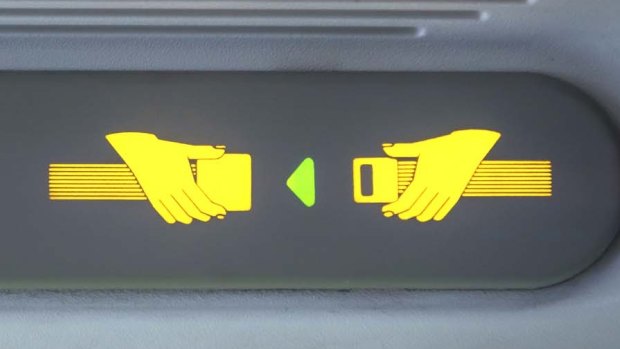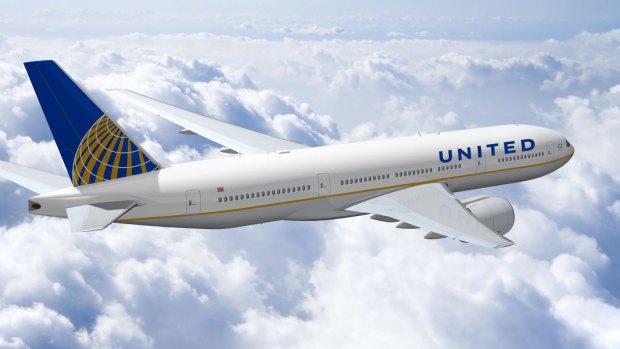This was published 7 years ago
Severe turbulence is becoming more common when you fly - and climate change could be the reason
By Gavin Haines

Passengers are advised to stay in their seats with seat belts on during severe turbulence.
Incidents of severe air turbulence are on the rise and there will be worse to come as climate change takes hold, scientists have warned.
Last month a United Airlines flight from Houston, Texas to London Heathrow was forced to make an emergency landing at Shannon Airport in Ireland after severe turbulence left 16 passengers needing hospital treatment.
And in June dozens more passengers were injured when turbulence rocked a Malaysia Airlines flight from London to Kuala Lumpur as it flew over the Bay of Bengal.

Severe turbulence: United Airlines was forced to make an emergency landing after passengers needed hospital treatment
On the face of it, incidents like these might seem to have little to do with climate change, but scientists say these narratives are intrinsically linked.
"When we think of global warming we're usually thinking about the fact that it's getting warmer at ground level, but in fact the temperatures are changing higher up in the atmosphere including where planes fly at 35,000ft," said Dr Paul Williams, an atmospheric scientist at the University of Reading.
"The atmospheric winds and temperatures up there are very strongly tied together and therefore the winds are changing in response to the temperature temperatures.
"As the climate changes the odds of encountering turbulence on your flight are increasing."
The aviation industry is a leading emitter of carbon dioxide – which acts as a thermal blanket for the Earth – and is now falling victim to the very climatic change it has helped create.
Transatlantic flights are likely to be significantly impacted by rising temperatures because the effect climate change is having on the jet stream.
"Our study finds that the jet stream winds along the flight route between London and New York are getting stronger because of climate change – they are getting 15 per cent stronger in winter," he said.
"This increase in the jet stream winds is going to have an impact on people's flights."
Turbulence is the most common cause of injury to air passengers – in US alone there are an estimated 58 injuries annually because of it – and according to the US Federal Aviation Administration, the number of injuries doubled between 1982 and 2003 (including adjustments made for the rise in number of flights).
It's also expensive: damage and delays caused by turbulence is estimated to costs US airlines between $150m ($113m) to $500m (£377m) annually.
There is little pilots can do to avoid lumps and bumps in the skies: clear air turbulence is not visible to the naked eye, isn't detectable on radar and can't be accurately forecasted.
"In the main we rely on reports from other aircraft, which we hear either directly or which are passed on by air traffic control," said British Airways captain, Steve Allright.
"We then consider the options available to us. Our endeavours to fly at an altitude that has been reported as smooth may be prevented by several constraints such another aircraft occupying that level, or the weight of the aircraft at that time.
"Whatever the circumstances, your pilot will find the most comfortable path to your destination without compromising your safety. Just like you, we experience the movement and would prefer a smoother ride."
Turbulence: the facts
What causes turbulence?
Air tends to flow as a horizontal snaking river called a jet stream. A jet stream can sometimes be thousands of miles long but is usually only a few miles wide and deep. Just like a fast-flowing river swirling against the riverbank, where the edge of the jet stream interacts with slower moving air, there may be some mixing of the air which causes turbulence.
Can it be avoided?
You cannot see turbulence, you cannot detect it on radar and you cannot accurately forecast it, but there are other ways of avoiding it. "In the main we rely on reports from other aircraft, which we hear either directly or which are passed on by air traffic control," said British Airways pilot, Steve Allright. "We then consider the options available to us. Our endeavours to fly at an altitude that has been reported as smooth may be prevented by several constraints such another aircraft occupying that level, or the weight of the aircraft at that time."
Is turbulence more likely on certain routes?
Any airport is at the mercy of strong winds on any given day. The same applies to jet streams on any given route, although there is generally more chance of turbulence crossing the ITCZ (Intertropical Convergence Zone) when flying south across Africa, for example.
How bad can turbulence get?
Flight crews around the world share a common classification of turbulence: light, moderate and severe. "Severe turbulence is extremely rare," said Allright. "In a flying career of over 10,000 hours, I have experienced severe turbulence for about five minutes in total. It is extremely uncomfortable but not dangerous. The aircraft may be deviating in altitude by up to 100 feet (30 metres) or so, up as well as down, but nothing like the thousands of feet you hear some people talking about."
What should I do?
Keep your seatbelt fastened and keep calm.
The Telegraph, London
See also: 20 secrets to enjoying an economy flight
See also: An expert's guide to beating jet lag
Sign up for the Traveller newsletter
The latest travel news, tips and inspiration delivered to your inbox. Sign up now.